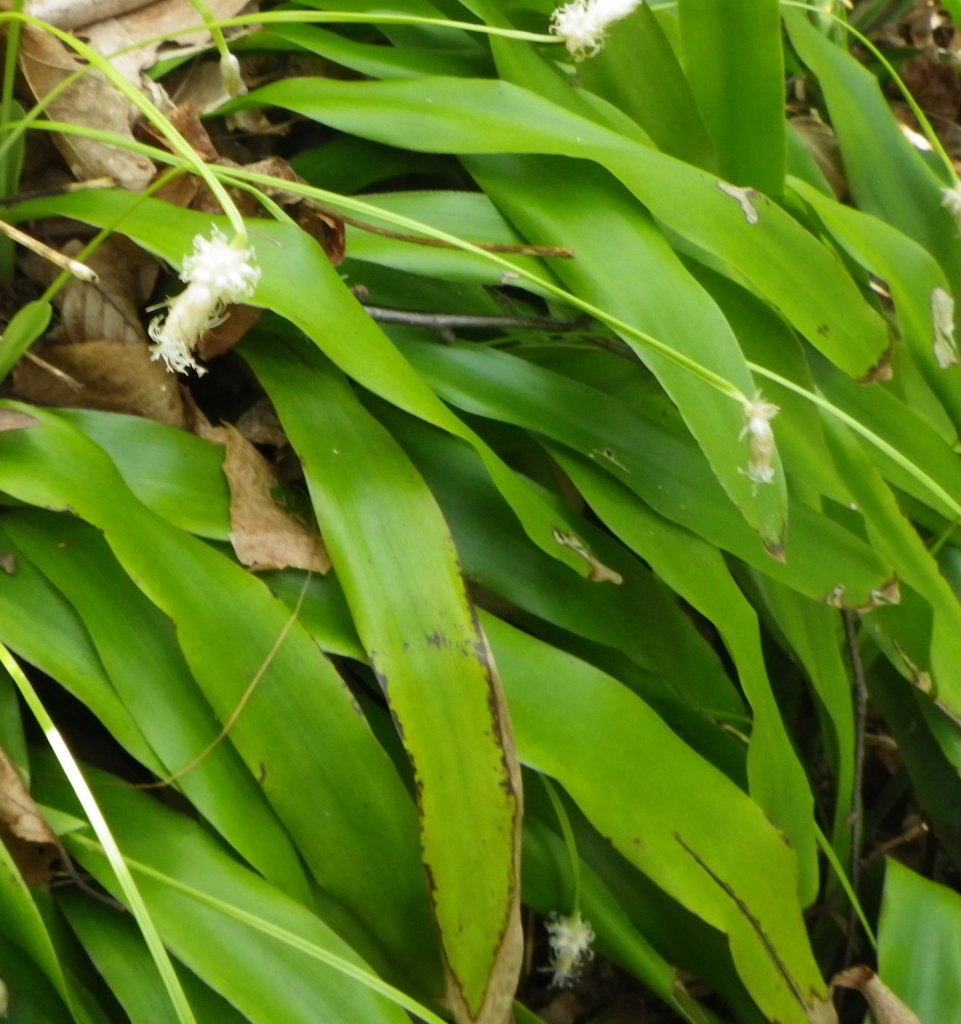
Also known as lily leaf sedge, this evergreen herbaceous perennial is endemic to the southern Appalachian mountains and a member the Cyperaceae, a plant family of over 2,000 species that include papyrus and the weed nutsedge. The plants form dense clumps of leathery, strap-shaped, dark green leaves that are 8-24″ long by 2″ wide, and have wavy finely toothed margins. The leaves droop and lack a mid-vein but have 50-90 faint parallel veins. From late spring to mid summer, spikes of male and female flowers appear on the same plant atop stalks that are 8-24″ long and have have 4-6 sheaths wrapped around the base. The male flowers are white, consist only of stamens, and are located above the female flowers that are green and produce 20-30 white fruit sacs, each with a small, 3-sided fruit within. Fraser’s sedge is an interesting choice for native plant, woodland, wildflower, and shade gardens. The genus name, Carex, is the Latin word for sedge. The specific epithet, fraseriana, honors Charles Fraser (1788 – 1831), first superintendent of the Sydney botanical gardens and colonial botanist
Type: Evergreen perennial
Bloom: Spikes of white male and green female flowers on the same plant with male above the female; late spring to mid summer
Size: 12-18″
Light: Partial to deep shade
Soil: Organic, moist, well-drained, acid
Hardiness: Zones 5-7
Care: Low maintenance
Pests and Diseases: None of significance
Propagation: Seed
Companion Plants: Indian cucumber (Medeola virginiana), Harpers heartleaf, (Hexastylis shuttleworthii var. harperi), round-lobed Hepatica (Anemone americana), white wake robin (Trillium grandiflorum)
Photo Credit: Halpaugh English Wikipedia